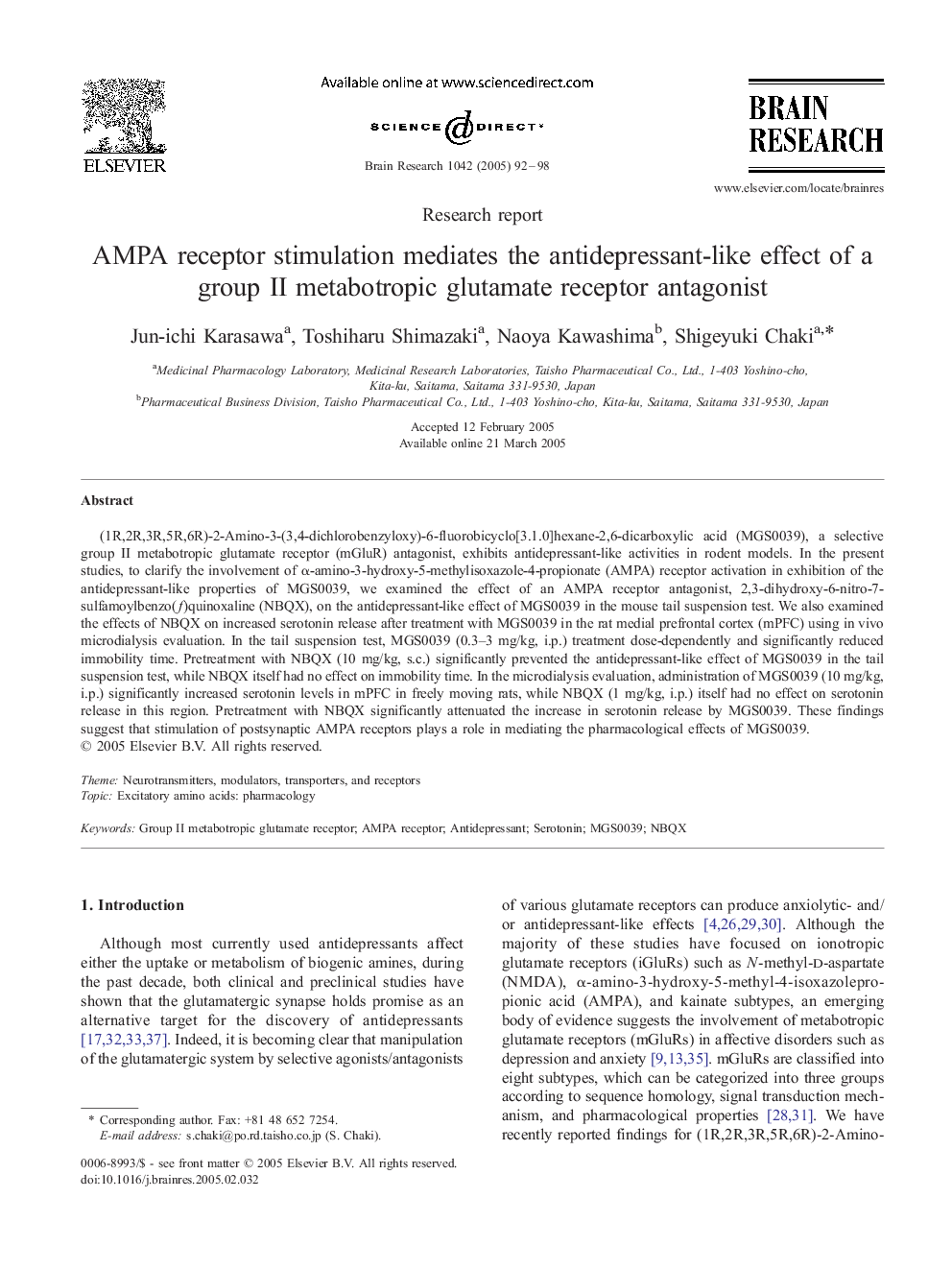| Article ID | Journal | Published Year | Pages | File Type |
|---|---|---|---|---|
| 9416379 | Brain Research | 2005 | 7 Pages |
Abstract
(1R,2R,3R,5R,6R)-2-Amino-3-(3,4-dichlorobenzyloxy)-6-fluorobicyclo[3.1.0]hexane-2,6-dicarboxylic acid (MGS0039), a selective group II metabotropic glutamate receptor (mGluR) antagonist, exhibits antidepressant-like activities in rodent models. In the present studies, to clarify the involvement of α-amino-3-hydroxy-5-methylisoxazole-4-propionate (AMPA) receptor activation in exhibition of the antidepressant-like properties of MGS0039, we examined the effect of an AMPA receptor antagonist, 2,3-dihydroxy-6-nitro-7-sulfamoylbenzo(f)quinoxaline (NBQX), on the antidepressant-like effect of MGS0039 in the mouse tail suspension test. We also examined the effects of NBQX on increased serotonin release after treatment with MGS0039 in the rat medial prefrontal cortex (mPFC) using in vivo microdialysis evaluation. In the tail suspension test, MGS0039 (0.3-3 mg/kg, i.p.) treatment dose-dependently and significantly reduced immobility time. Pretreatment with NBQX (10 mg/kg, s.c.) significantly prevented the antidepressant-like effect of MGS0039 in the tail suspension test, while NBQX itself had no effect on immobility time. In the microdialysis evaluation, administration of MGS0039 (10 mg/kg, i.p.) significantly increased serotonin levels in mPFC in freely moving rats, while NBQX (1 mg/kg, i.p.) itself had no effect on serotonin release in this region. Pretreatment with NBQX significantly attenuated the increase in serotonin release by MGS0039. These findings suggest that stimulation of postsynaptic AMPA receptors plays a role in mediating the pharmacological effects of MGS0039.
Keywords
Related Topics
Life Sciences
Neuroscience
Neuroscience (General)
Authors
Jun-ichi Karasawa, Toshiharu Shimazaki, Naoya Kawashima, Shigeyuki Chaki,
